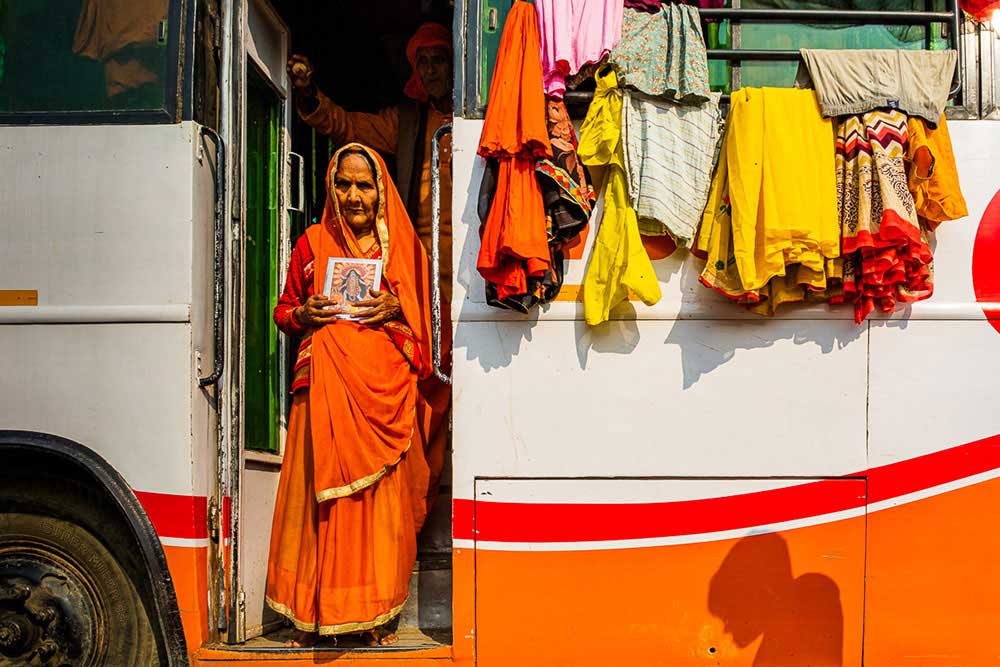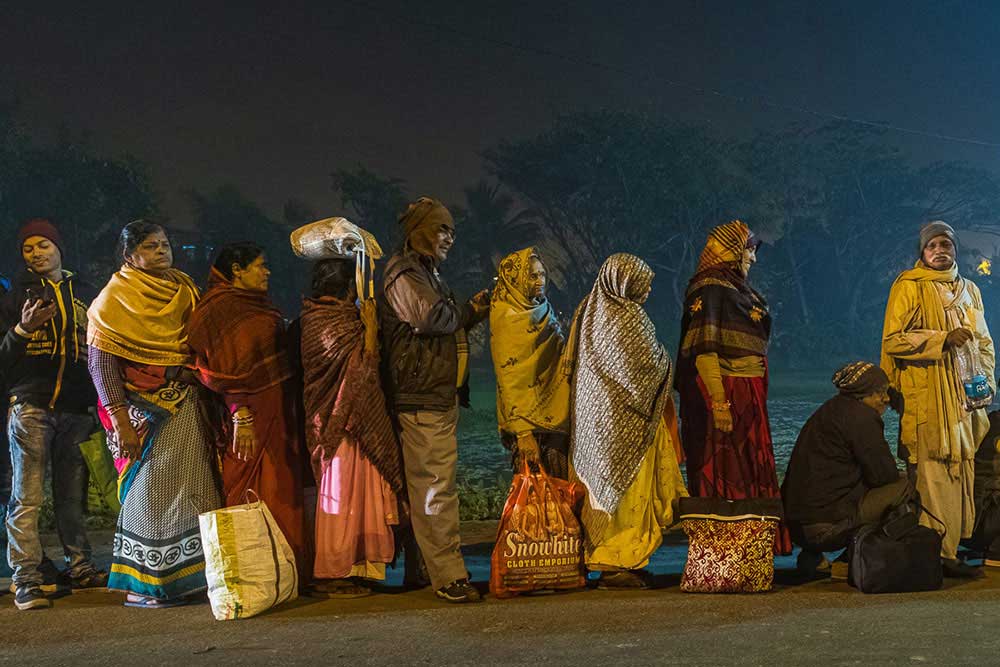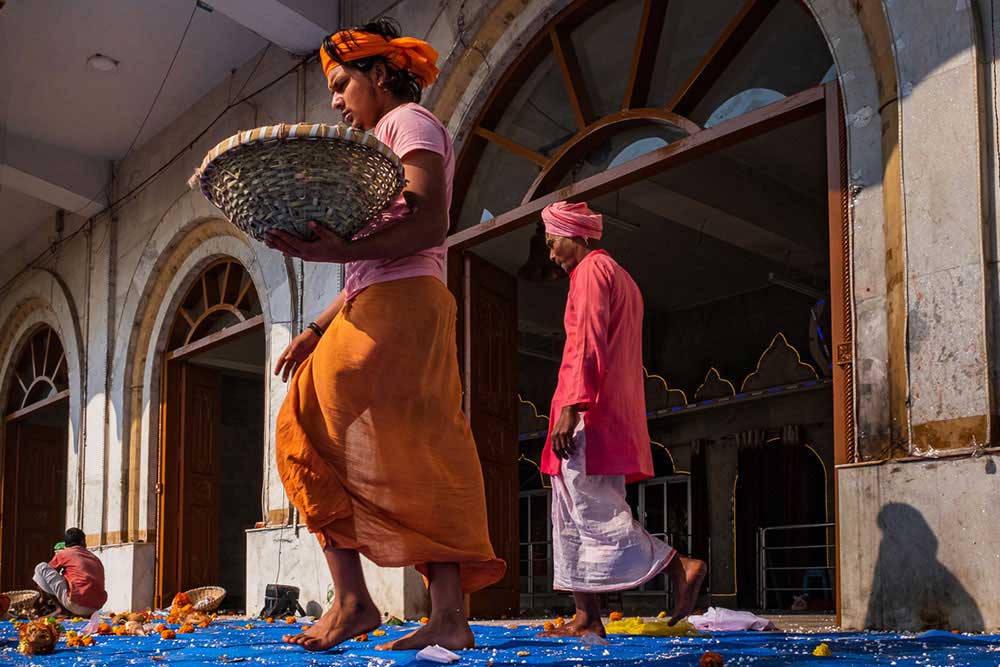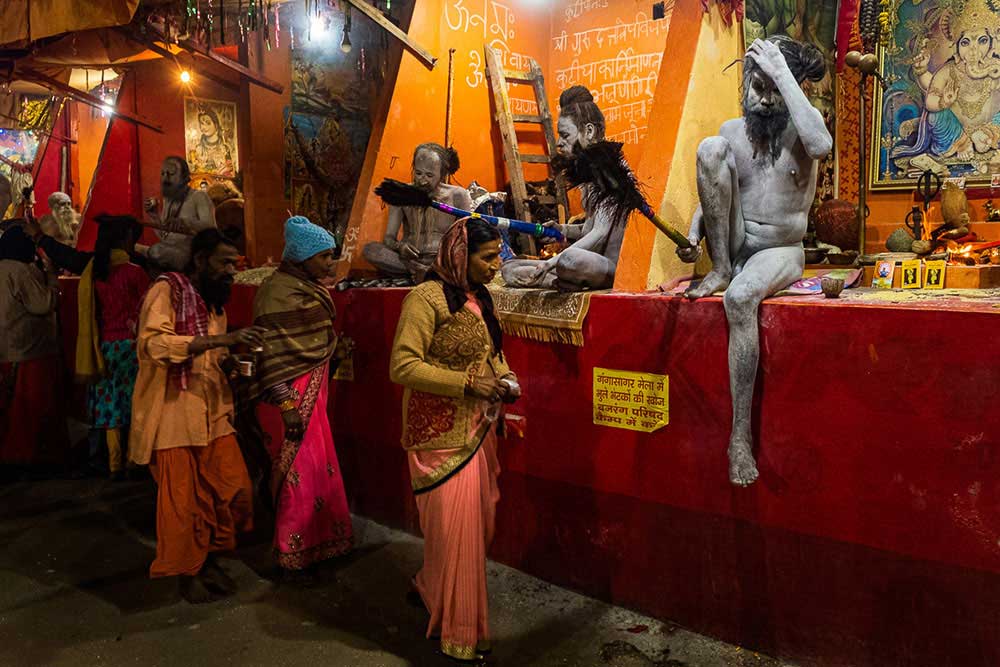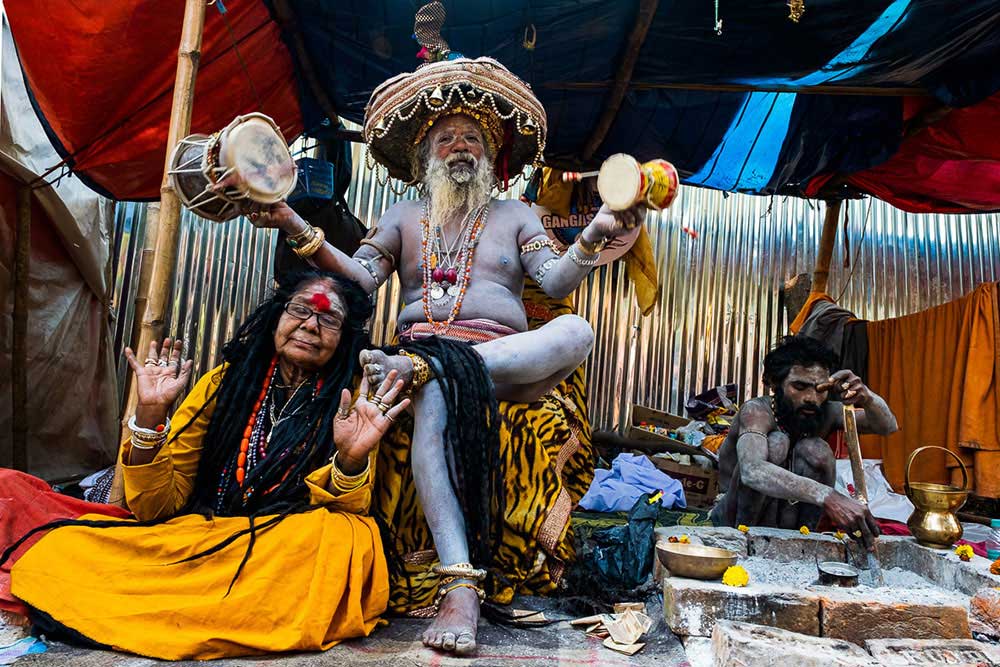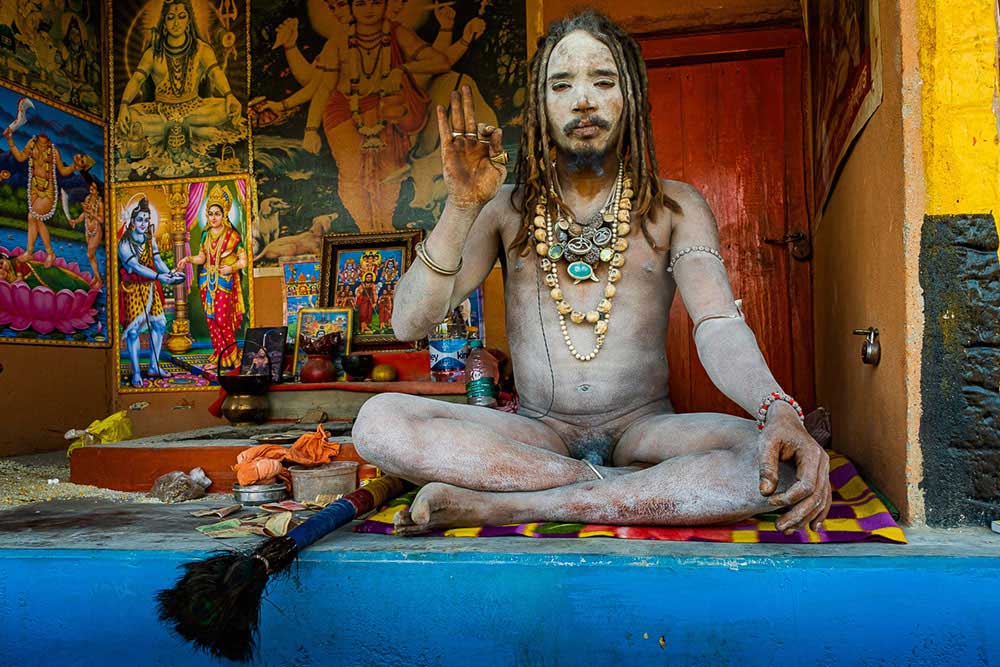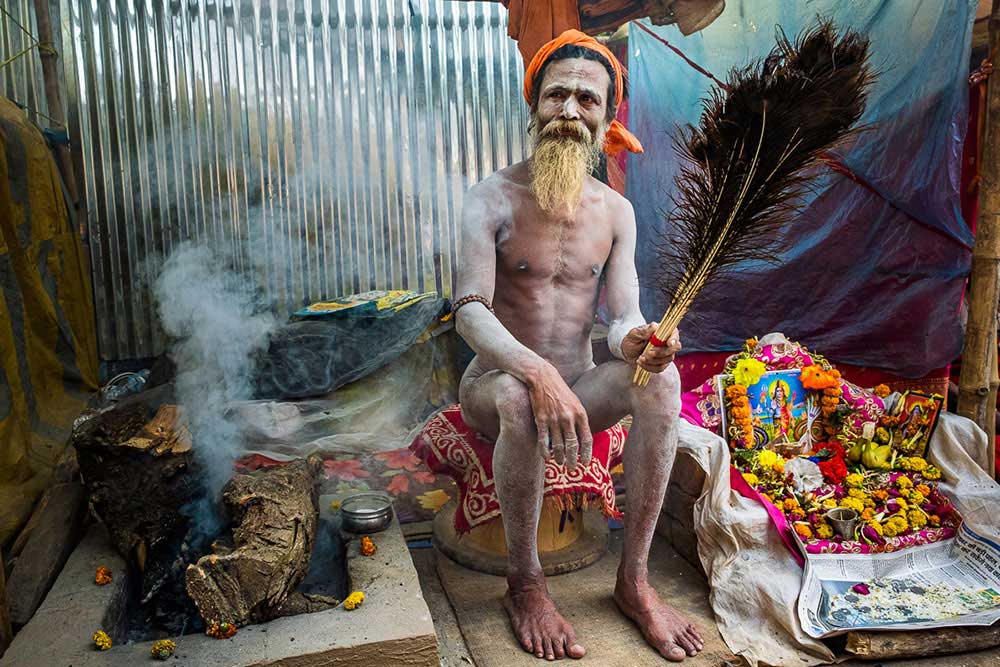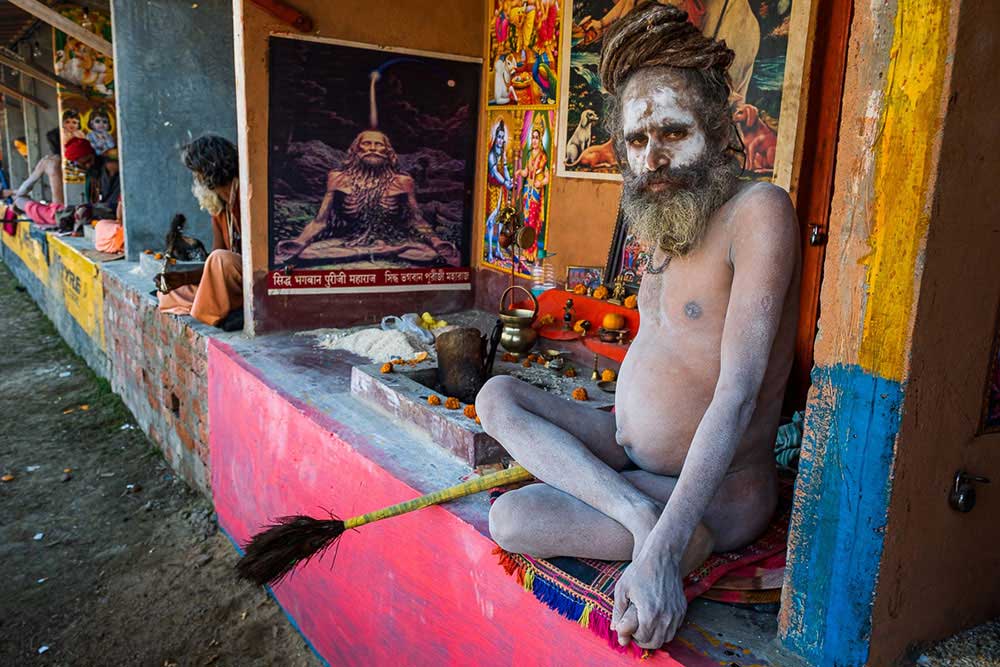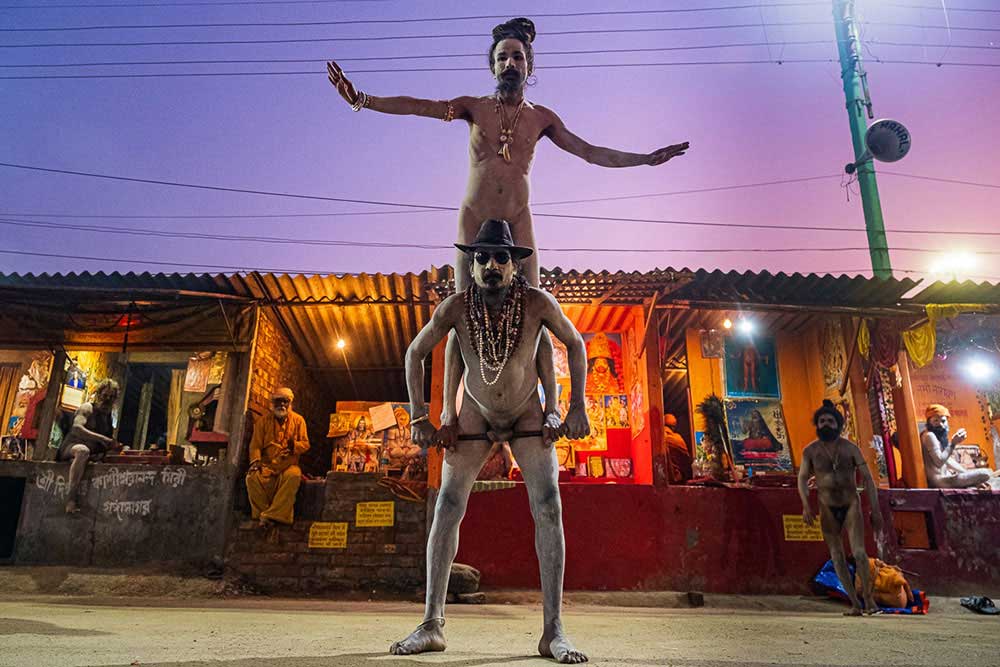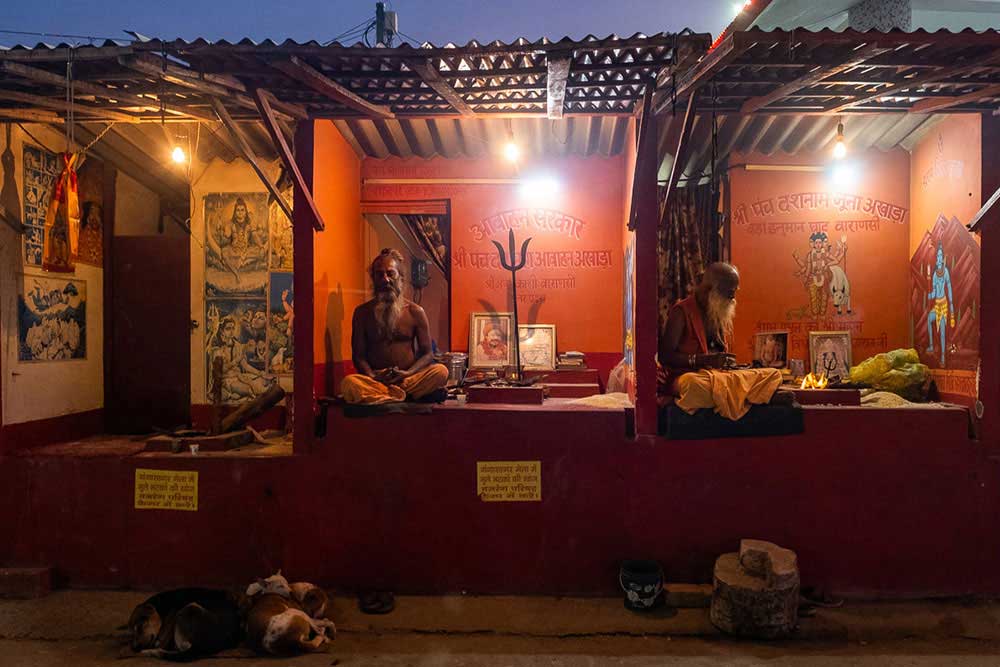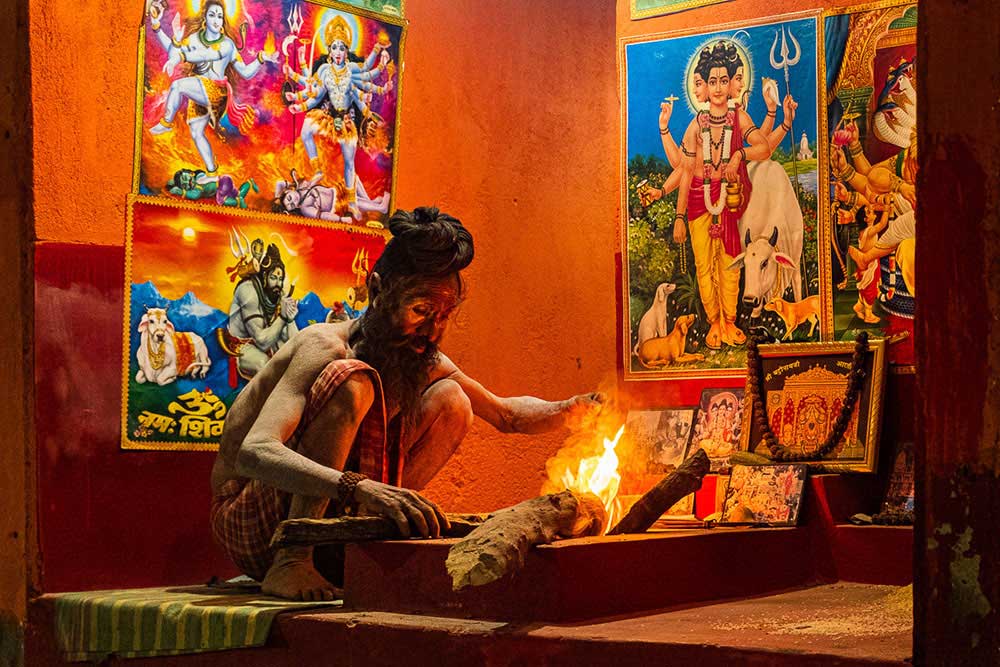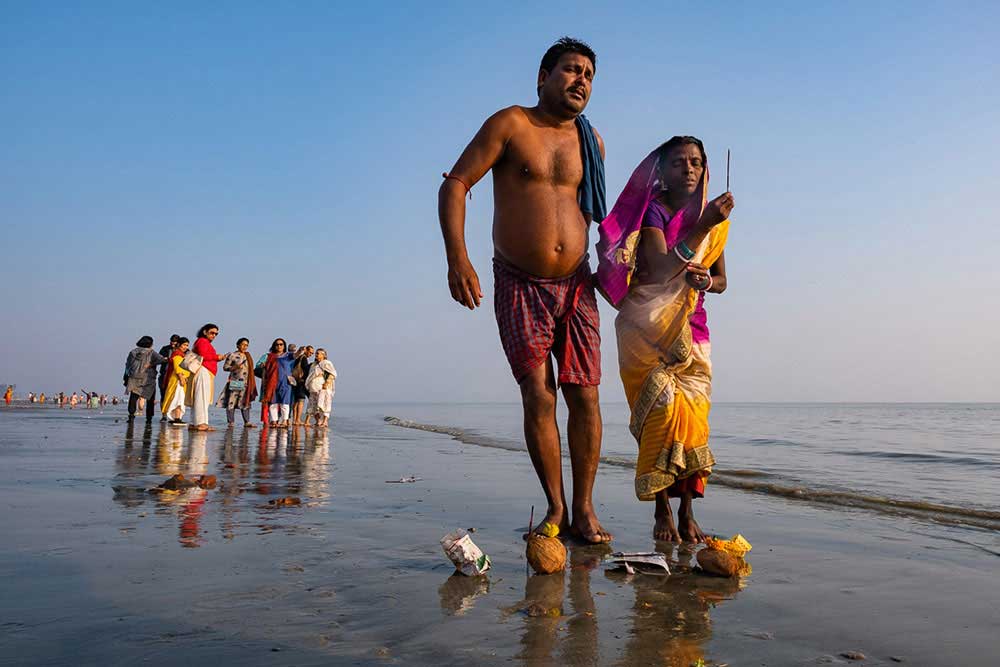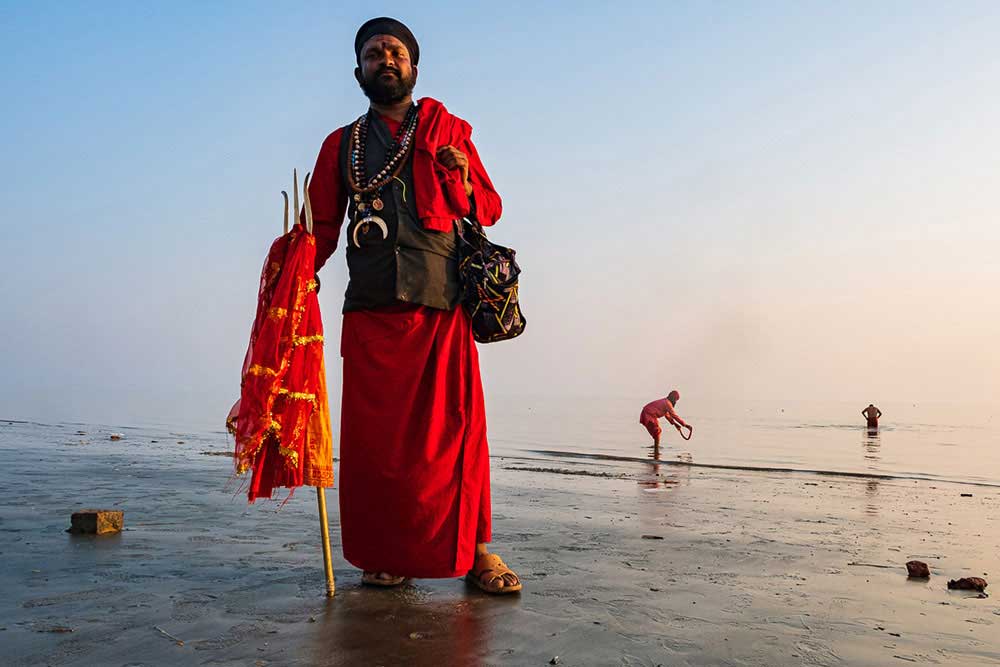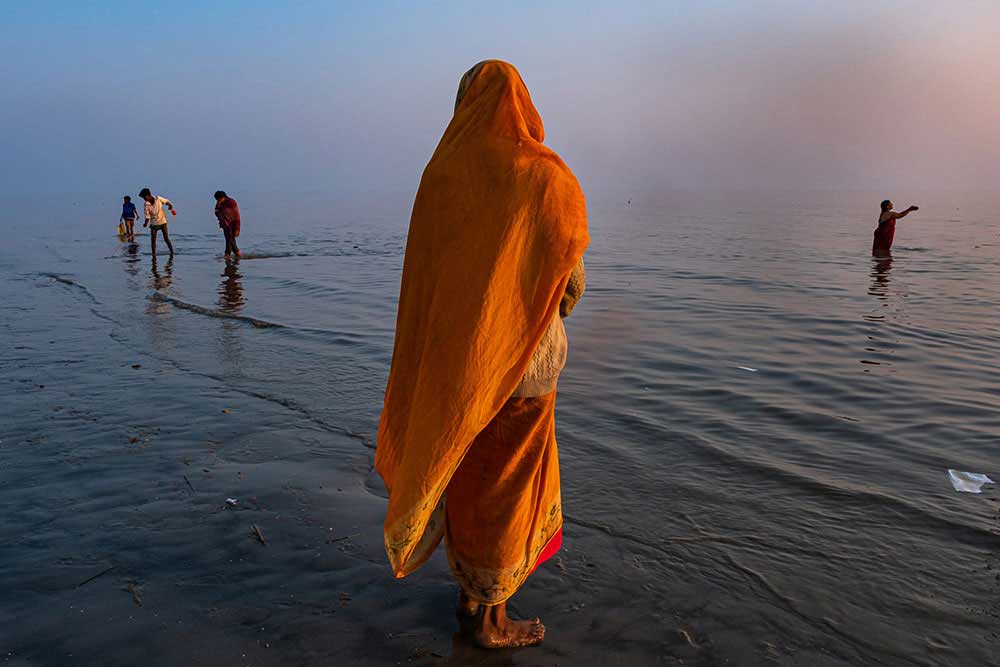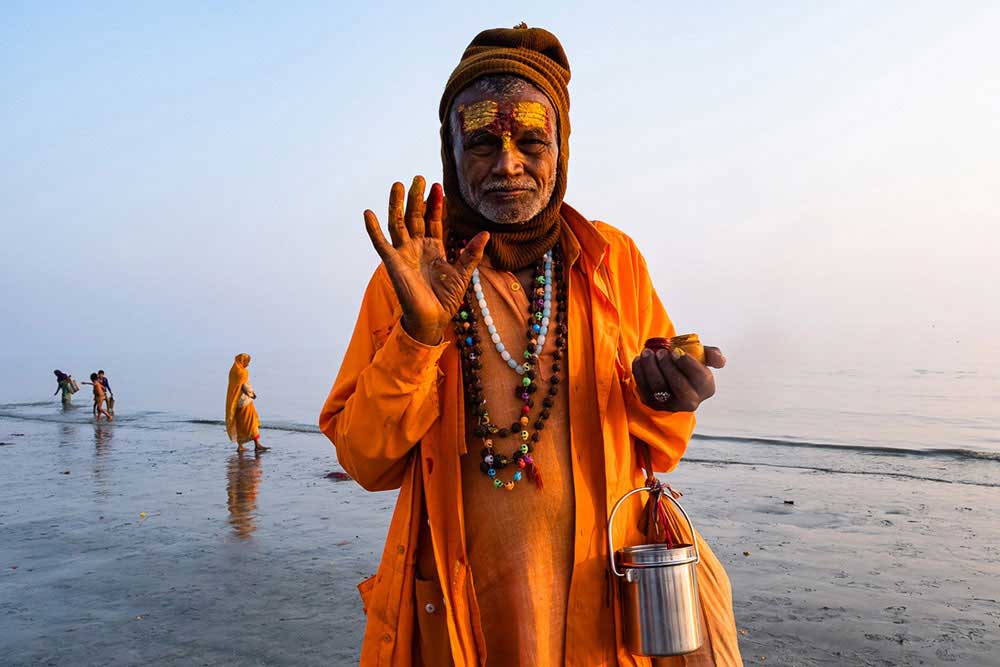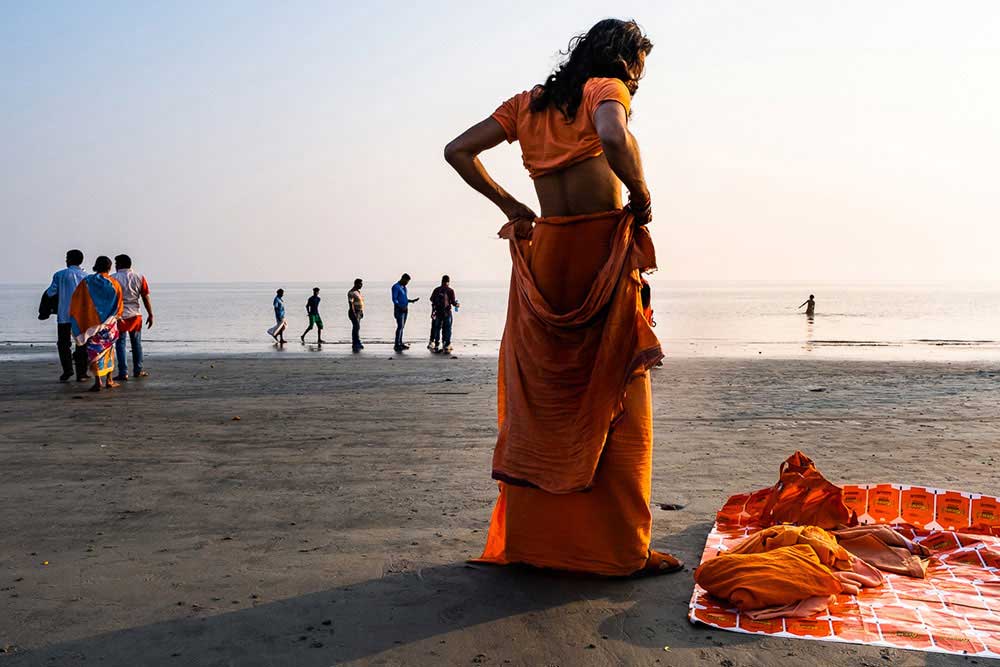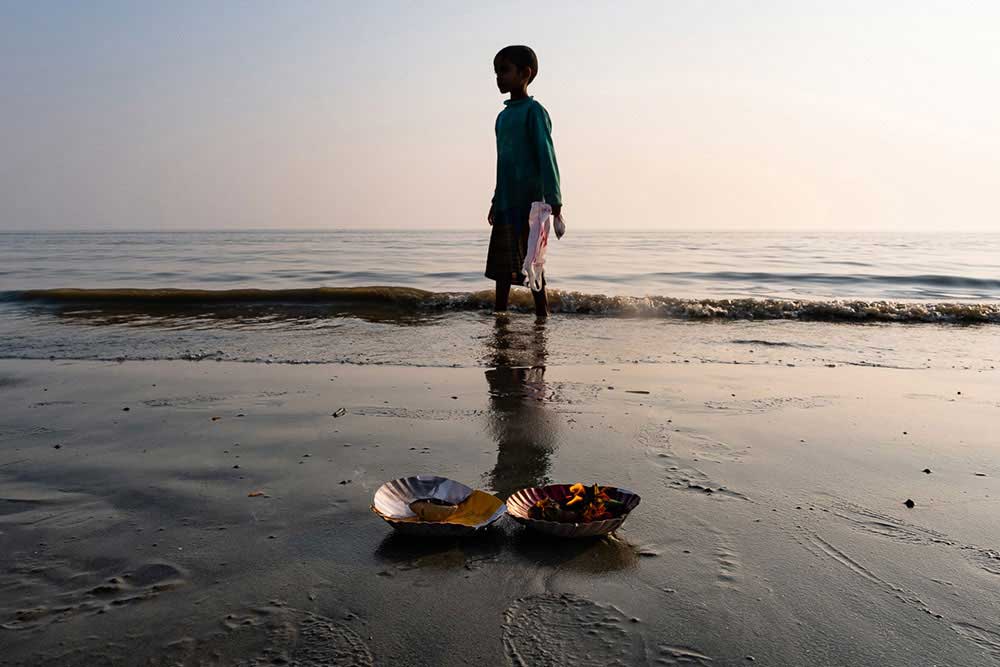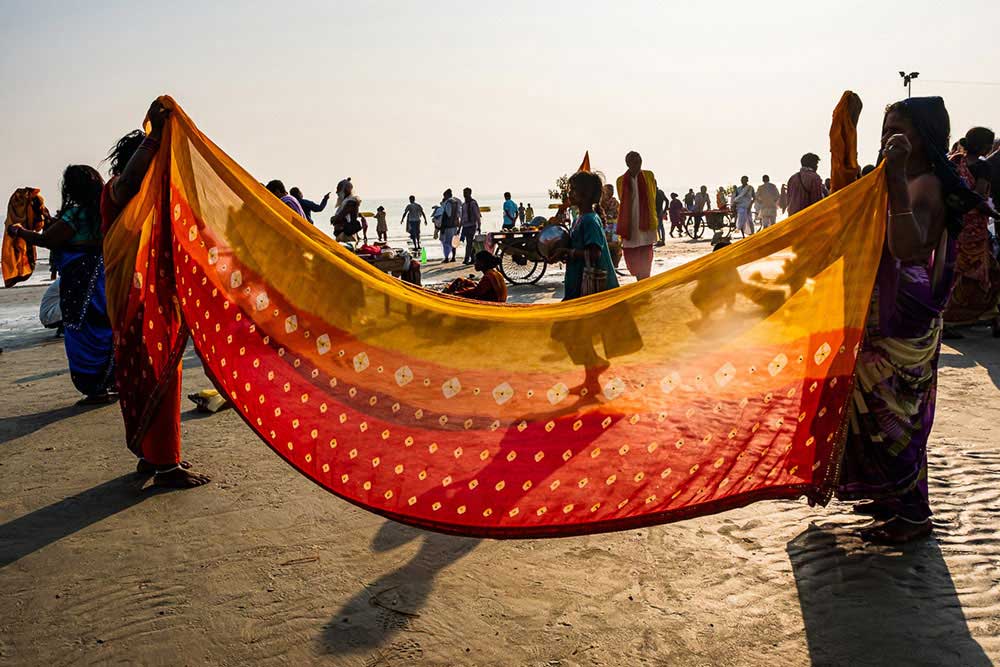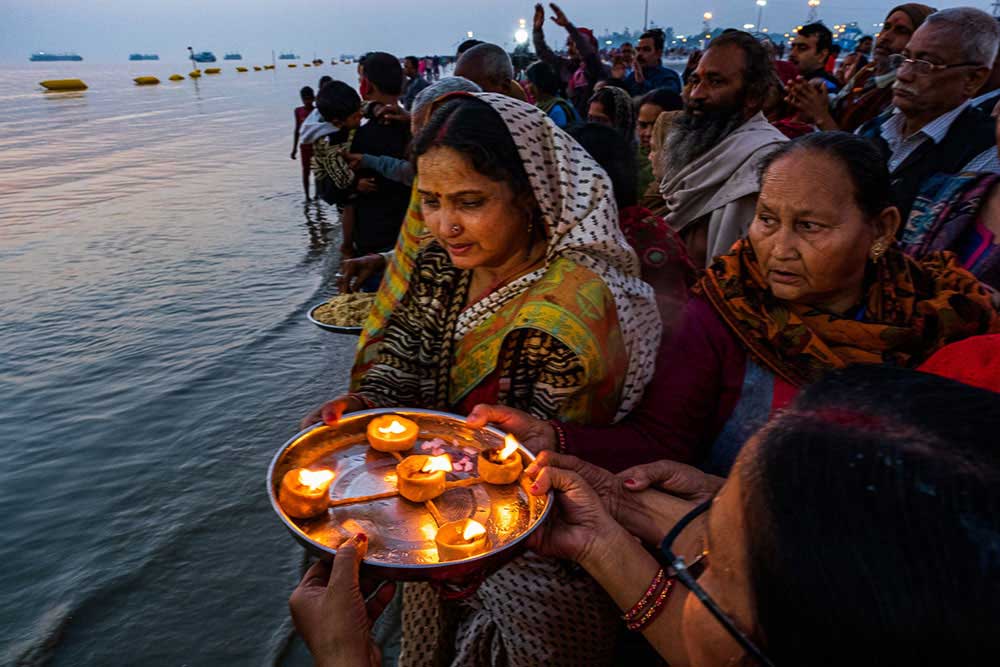The Ganga Sagar Mela is the most popular Hindu pilgrimage after the Kumbh Mela. On the day of Makar Sankranti (a festival celebrating the harvest in mid-January), devotees show up to dip themselves at the confluence of the river Ganges and the Bay of Bengal to purify their souls.
Somehow, this Mela is incredibly popular with Naga Sadhus (literally “Naked Yogis”), a highly respected sect of “holy men” followers of Shiva, known for their asceticism and renunciation of societal norms. The Ganga Sagar Mela takes place on Sangar Island in West Bengal. Some of the devotees travel for weeks in large busses to get there, one more indication of their devotion. The final step of the journey is a ferry crossing, which takes about an hour, but the wait to get on is, not surprisingly, interminable.
When pilgrims finally arrive at the Mela, they make their way to the Cape Munil temple to make offerings and be blessed with one of the numerous priests. Next to the temple is a long array of small cubicles decorated with colorful images of Hindu gods and marigold flower garlands. Each one of these cubicles is “inhabited” by a Naga Sadhu, looking like a ghost with his naked body smear with ashes. The sadhus are holding court, performing rituals, and ready to give the pilgrims blessings, tapping them on the head with peacock feathers. Beware, some of the rites involve showing their followers that they control their bodies and that their bodies mean nothing.
After they visit the temple, pilgrims make their way to the water to take a dip, light lamps, and pray. Priests are there as well, ready to perform blessings using holy water. Most of the pilgrims stay there until sunset. The next day, they start on the long way back home. [Official Website]



